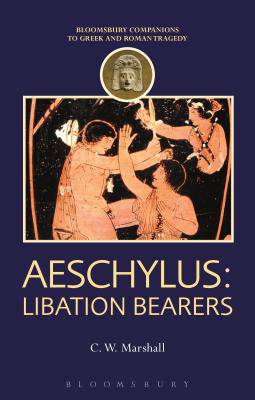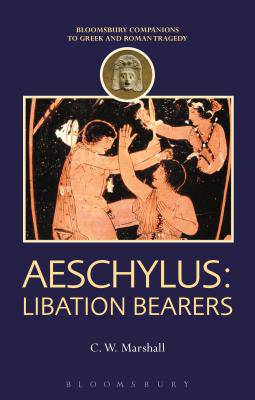
- Afhalen na 1 uur in een winkel met voorraad
- Gratis thuislevering in België vanaf € 30
- Ruim aanbod met 7 miljoen producten
- Afhalen na 1 uur in een winkel met voorraad
- Gratis thuislevering in België vanaf € 30
- Ruim aanbod met 7 miljoen producten
Zoeken
€ 161,45
+ 322 punten
Omschrijving
Libation Bearers is the 'middle' play in the only extant tragic trilogy to survive from antiquity, Aeschylus' Oresteia, first produced in 458 BCE. This introduction to the play will be useful for anyone reading it in Greek or in translation. Drawing on his wide experience teaching about performance in the ancient world, C. W. Marshall helps readers understand how the play was experienced by its ancient audience. His discussion explores the impact of the chorus, the characters, theology, and the play's apparent affinities with comedy. The architecture of choral songs is described in detail. The book also investigates the role of revenge in Athenian society and the problematic nature of Orestes' matricide.
Libation Bearers immediately entered the Athenian visual imagination, influencing artistic depictions on red-figured vases, and inspiring plays by Euripides and Sophocles. This study looks to the later plays to show how 5th-century audiences understood Libation Bearers. Modern reception of the play is integrated into the analysis. The volume includes a full range of ancillary material, providing a list of relevant red-figure vase illustrations, a glossary of technical terms, and a chronology of ancient and modern theatrical versions.
Libation Bearers immediately entered the Athenian visual imagination, influencing artistic depictions on red-figured vases, and inspiring plays by Euripides and Sophocles. This study looks to the later plays to show how 5th-century audiences understood Libation Bearers. Modern reception of the play is integrated into the analysis. The volume includes a full range of ancillary material, providing a list of relevant red-figure vase illustrations, a glossary of technical terms, and a chronology of ancient and modern theatrical versions.
Specificaties
Betrokkenen
- Auteur(s):
- Uitgeverij:
Inhoud
- Aantal bladzijden:
- 200
- Taal:
- Engels
- Reeks:
Eigenschappen
- Productcode (EAN):
- 9781474255073
- Verschijningsdatum:
- 7/09/2017
- Uitvoering:
- Hardcover
- Formaat:
- Genaaid
- Afmetingen:
- 140 mm x 216 mm
- Gewicht:
- 371 g

Alleen bij Standaard Boekhandel
+ 322 punten op je klantenkaart van Standaard Boekhandel
Beoordelingen
We publiceren alleen reviews die voldoen aan de voorwaarden voor reviews. Bekijk onze voorwaarden voor reviews.








